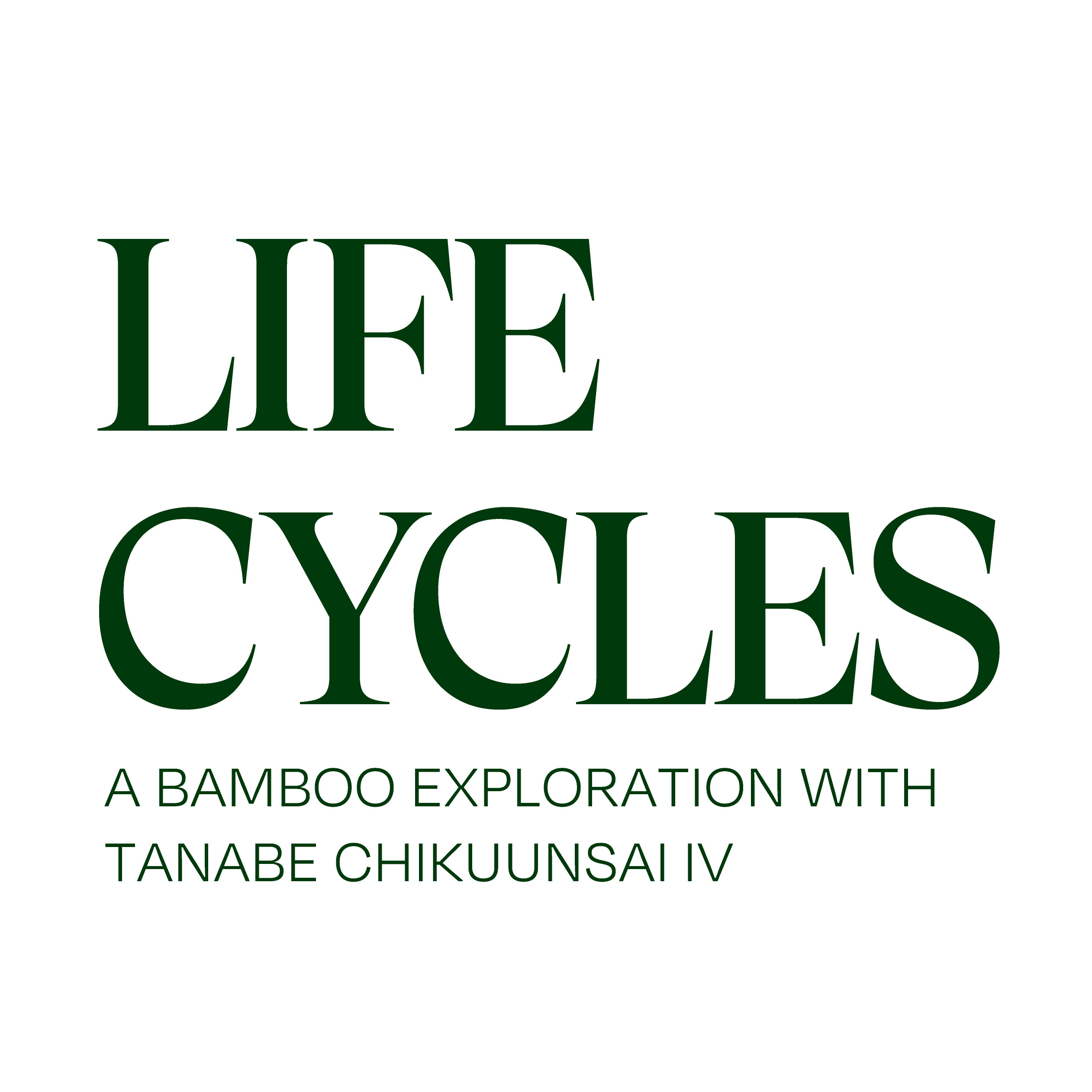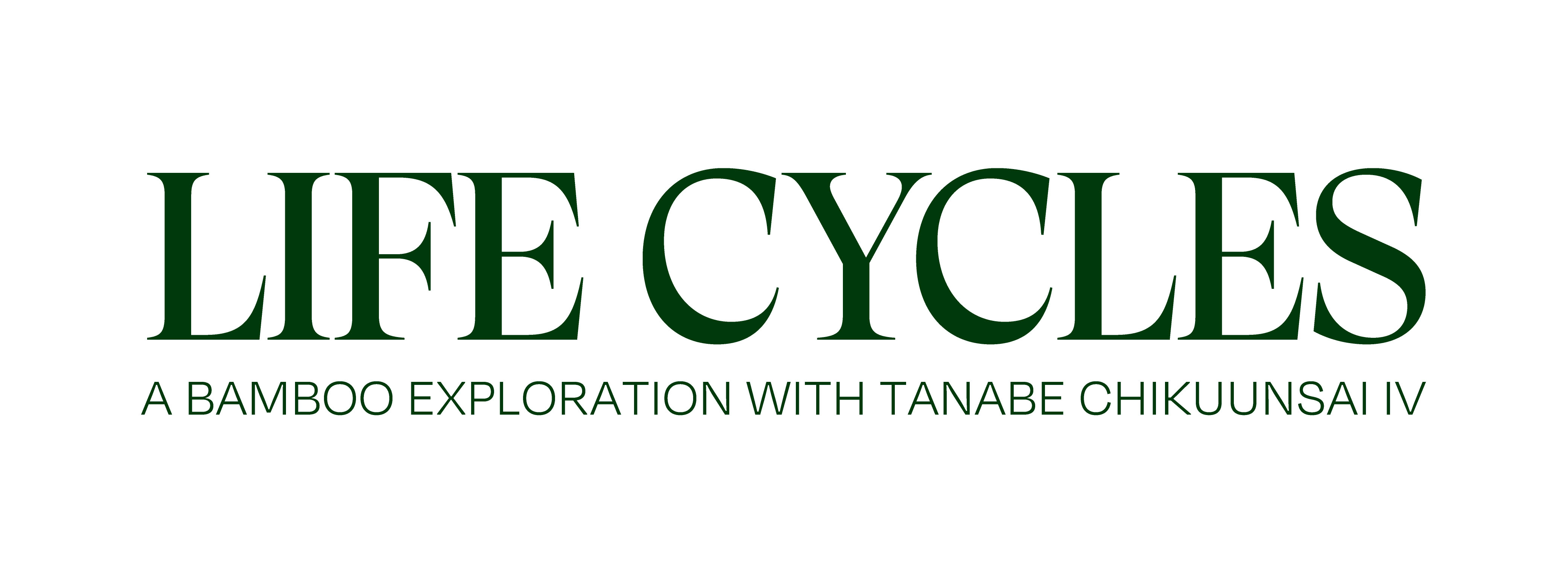
TANABE CHIKUUNSAI I (1877–1937)
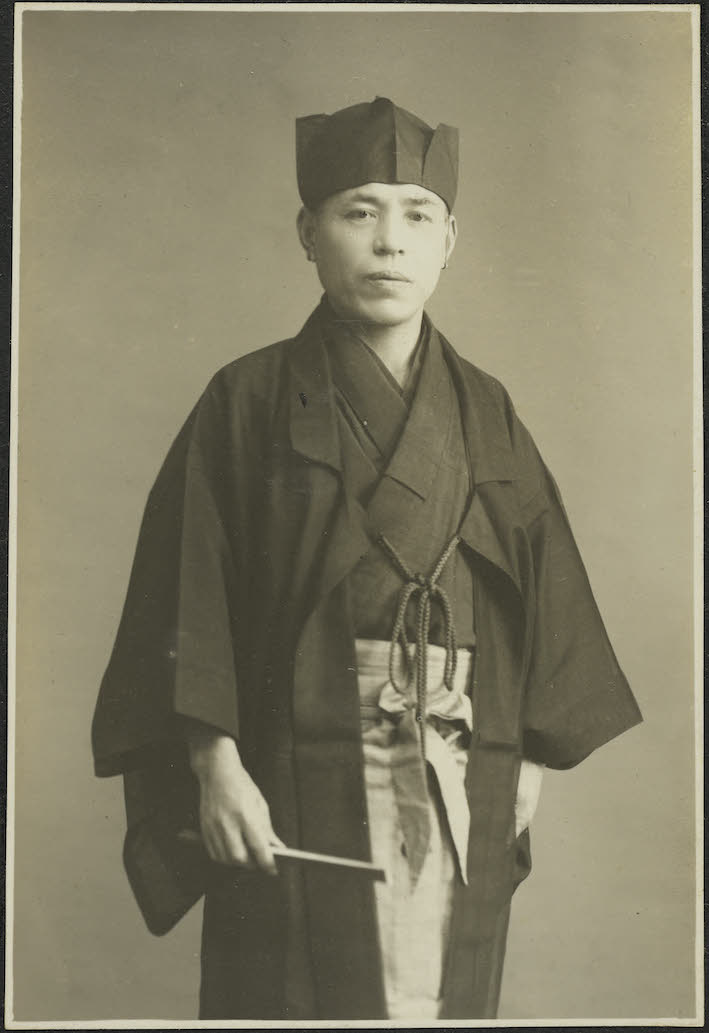
Tanabe Chikuunsai I was born Tanabe Tsuneo in 1877. His ancestors were doctors who served the Matsudaira clan of Amagasaki. When Tsuneo was twelve, he apprenticed to the great Osaka bamboo artist Wada Waichisai I, with whom he trained for eleven years. In 1901, he received the art name Chikuunsai, meaning “Bamboo Cloud Master,” from Waichisai I and became an independent bamboo artist, establishing his studio in Sakai in Osaka prefecture.
Considered the most cultured bamboo artist in Osaka, Tanabe Chikuunsai I was also the headmaster of the Seifu Aoyama school of ikebana, a full sencha tea master, and an active and important member of literati artistic and social circles. He was inspired by the literati paintings of Yanagisawa Kien (1704–1758), who often depicted luxuriant flower arrangements in woven baskets. Chikuunsai’s flower baskets were modeled on Chinese baskets, or karamono, which feature tight weaves and formal shapes. However, many of his works have a Japanese sensibility, incorporating Edo-period ceremonial arrow shafts, decorated with gold and lacquer, or smoked bamboo from the rafters of traditional Japanese houses. He received many awards at public exhibitions and some of his baskets became part of the Imperial Household collection.
TANABE CHIKUUNSAI II (1910–2000)
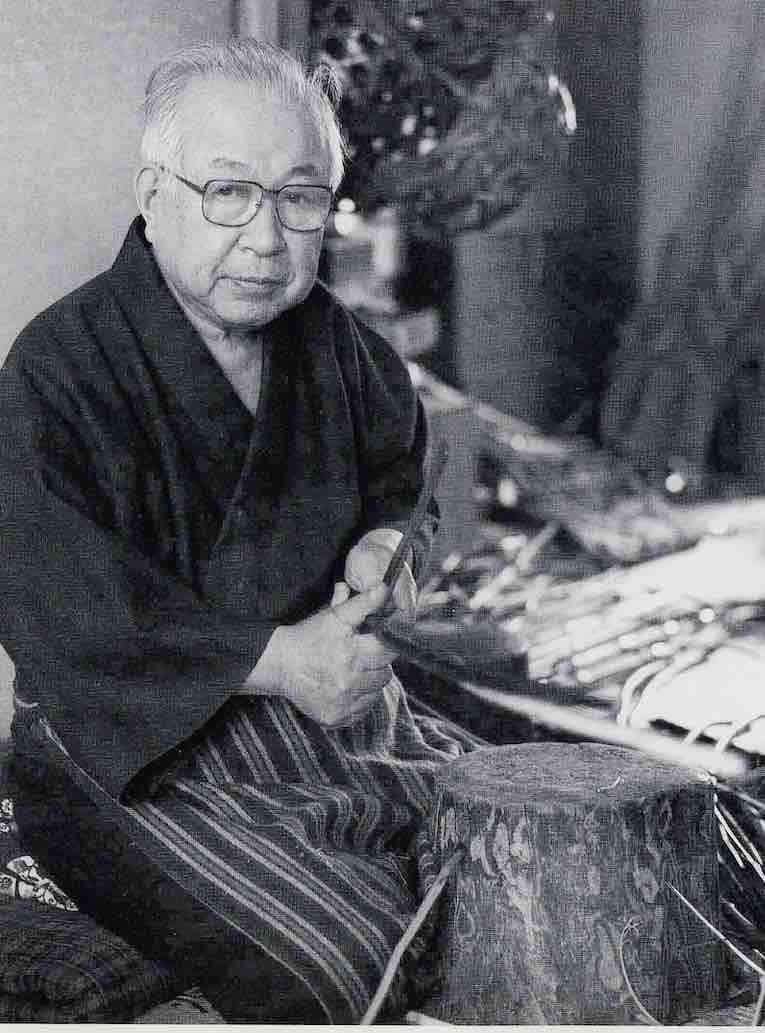
The son of Tanabe Chikuunsai I, Tanabe Toshio was encouraged to study traditional Japanese painting and calligraphy. He also learned basketmaking as a child, and, like his father, he initially created Chinese-style baskets. In 1925, at the age of fifteen, he had his first exhibition, and his father gave him the art name Shōchiku, meaning “Small Bamboo.” As Shōchiku, he was accepted into several major public exhibitions, including the Nitten (Japan Fine Arts Exhibition) in 1937.
Upon his father’s sudden death in 1937, he assumed the art name Tanabe Chikuunsai II and soon changed his artistic style, focusing on more loosely woven baskets. He is best known for his hexagonal plaiting of extremely fine strips of bamboo into lightweight openwork pieces. In 1952, he received the Tokusen (Specialty) Prize and the Asakura Prize at the Eighth Nitten Exhibition, and in 1959 he won the Osaka Prefecture Arts Prize. In 1981, the Japanese government awarded him the Order of the Sacred Treasure (Zuiho), Fourth Class, for his distinguished artistic achievements.
Ten years later, in 1991, he transferred his name to his eldest son, who became Tanabe Chikuunsai III, and took the art name of Ichikusai, remaining active as an advisor to the Nitten and the director of the Osaka Kōgei (Craft) Kyōkai Association.
TANABE CHIKUUNSAI III (1940–2014)
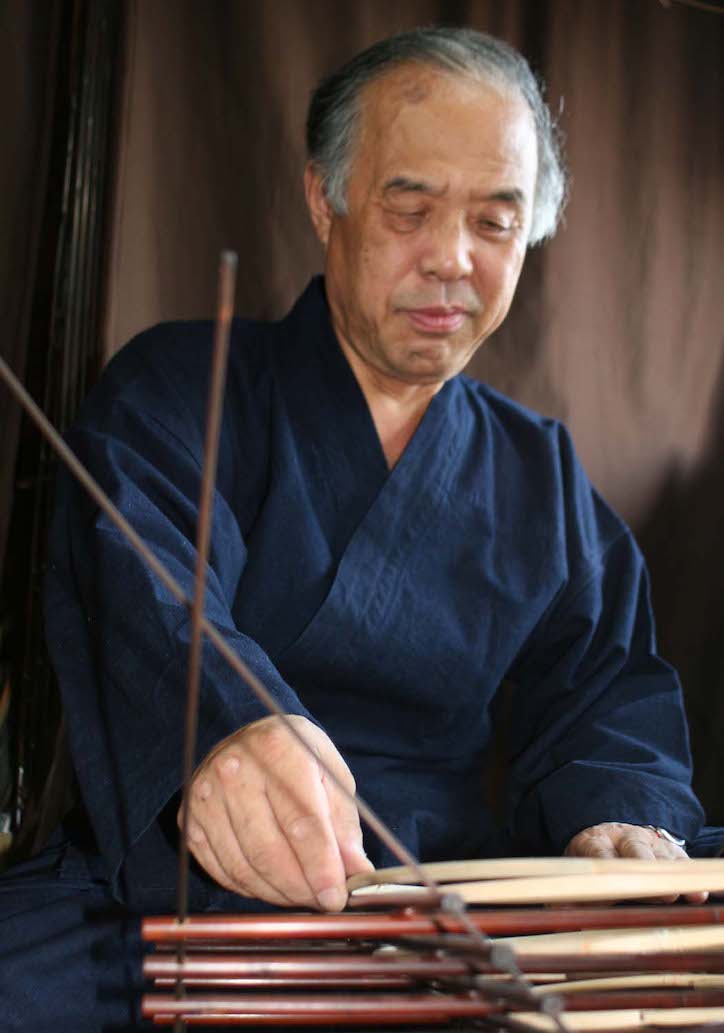
Born in 1940, Tanabe Hisao attended a high school with a metal department and then studied industrial design at Musashino Art University (Tokyo). After graduation, he joined the family workshop and trained in the art of bamboo under his father and Tsukayoshi Tadayoshi, a disciple of his grandfather, Chikuunsai I. He began creating works featuring sculptural and architectural qualities.
In 1965, one of his works was accepted at the Nitten (Japan Fine Arts Exhibition) and acquired by the Japanese government. In 1969, his father gave him the art name Shōchiku II. Five years later, his piece entitled Hō, made in yadake bamboo (a light but firm and straight bamboo traditionally used for arrows), was presented at the Nitten and bought by the National Museum of Modern Art, Tokyo.
At the age of fifty-one, in 1991, he received the art name of Tanabe Chikuunsai III from his father. He is known for his more contemporary and sculptural approach to basket forms, in particular for his technique of using yadake bamboo to create abstract forms. His works have been exhibited in the United States, Korea, New Zealand, Thailand, and Japan.
TANABE CHIKUUNSAI IV (b. 1973)
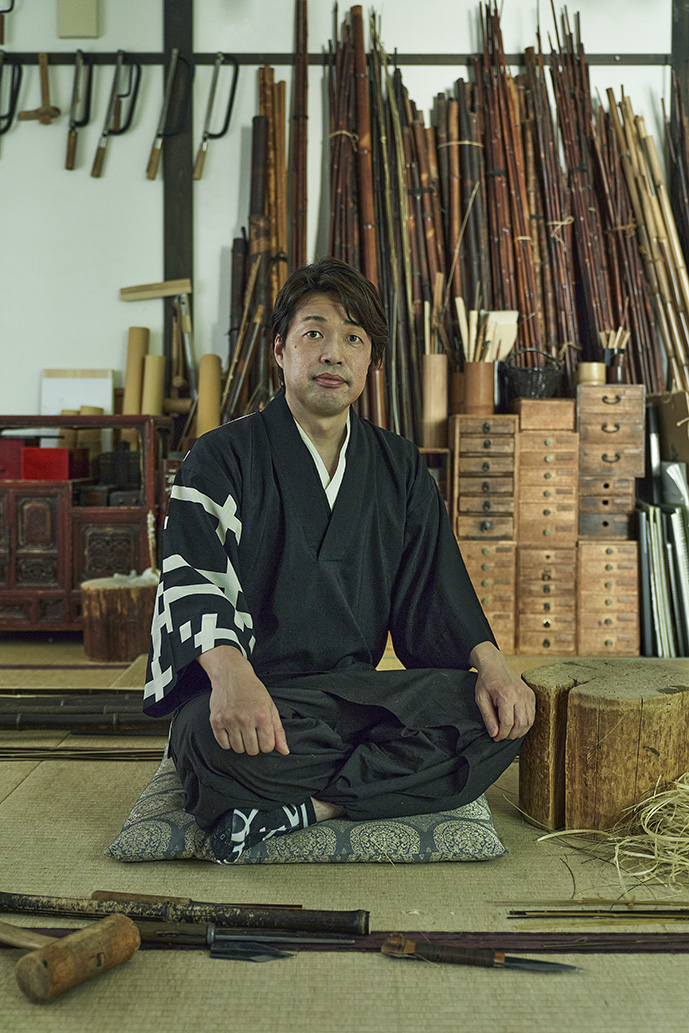
Photo by Minamoto Tadayuki
Tanabe Chikuunsai IV was born Tanabe Takeo in 1973. Like his father, Tanabe Chikuunsai III, he attended Osaka Kōgei High School, an art high school, and earned a degree in sculpture from Tokyo University of the Arts. As a young artist, Shōchiku III, he continued the tradition of making bamboo baskets and small-scale sculptures, but he also began collaborating with artists in other media. In 2011, he started creating large-scale dramatic, immersive installations that evoke the bamboo forests from which he sources his materials. In 2017, three years after the death of his father, he was given the name Chikuunsai IV.
Chikuunsai has received many awards in Japan, including the Mayor’s Award at the Sakai City Art Exhibition in 2001, the Osaka Craft Exhibition Choice Award at the All Kansai Art Exhibition in 2004, and the Outstanding Artist Award from Japan’s Ministry of Education, Culture, Sports, Science and Technology in March 2022. Internationally, he has created installations at the Metropolitan Museum of Art in New York, the Asian Art Museum of San Francisco, and the Odunpazarı Modern Museum (OMM) in Eskişehir, Turkey, and his work is in the collections of the Victoria and Albert Museum, the Seattle Art Museum, and the Philadelphia Museum of Art. He won the first Mingei Bamboo Prize (awarded by the Guimet Museum in Paris and the Mingei Gallery) in 2021.
Main Exhibition Page
